Disclosure: This article contains affiliate links. We may earn a commission from purchases at no extra cost to you, which helps our travel content.
The morning light spills over Table Mountain like liquid gold as I sketch its contours from my temporary apartment in Bo-Kaap. This is my third visit to Cape Town, and each time I return, this city reveals another layer of itself to me – like a complex artwork that changes with every viewing angle. Most travelers know the postcard version: Table Mountain, Camps Bay beaches, the V&A Waterfront, and the colorful houses of Bo-Kaap. But beyond these well-trodden paths lies another Cape Town – one that whispers rather than shouts, one that reveals itself slowly to those willing to look deeper. After befriending local artists, mountain guides, and culinary enthusiasts during my previous stays, I've compiled this intimate guide to Cape Town's secret corners – places where the authentic pulse of this magnificent city beats strongest. These are spots where locals go to escape the crowds, where cultural traditions thrive away from commercial tourism, and where the true spirit of the Mother City reveals itself in subtle, beautiful ways.
The Hidden Kloof: Disa Gorge Trail
Most visitors to Cape Town make the obligatory trek up Table Mountain via the cable car or the popular Platteklip Gorge route. But tucked away on the mountain's back side lies a trail that few tourists ever discover – the enchanting Disa Gorge in Orangekloof, a restricted conservation area that limits daily visitors.
I discovered this hidden gem through Thomas, a local mountaineer I met at a photography exhibition in Woodstock. 'If you want to see where the mountain breathes,' he told me, 'you need to walk where the disas grow.' The disa being South Africa's famous red orchid that blooms in the most inaccessible corners of the mountain.
To access this trail, you'll need to obtain a permit from SANParks (South African National Parks) at least two days in advance – a small bureaucratic hurdle that keeps the crowds away. The morning I ventured into Disa Gorge, I was one of only eight people permitted on the trail that day.
The path begins innocuously enough at Constantia Nek, winding through ancient yellowwood forests before opening into a narrow gorge where a crystal-clear stream tumbles over moss-covered boulders. The walls of the gorge rise dramatically on either side, creating a natural cathedral of stone and vegetation. If you're lucky enough to visit between January and March, you might spot the vivid red disas clinging to the damp cliff faces – a sight that stopped me in my tracks, compelling me to reach for my watercolor travel kit to capture their delicate beauty against the rugged backdrop.
What makes this trail special isn't just its natural beauty but the profound silence that envelops you – a rare commodity in our hyperconnected world. The only sounds are the gentle gurgle of the stream, the rustle of leaves, and occasionally, the distinctive call of the Cape sugarbird flitting between protea bushes.
The trail culminates at a series of pristine rock pools, perfect for a refreshing dip before beginning your descent. I spent nearly an hour perched on a sun-warmed boulder beside the highest pool, sketching the play of light through the water while two local hikers shared their homemade biltong (South African dried meat) with me – an impromptu communion of mountain lovers far from the madding crowd.
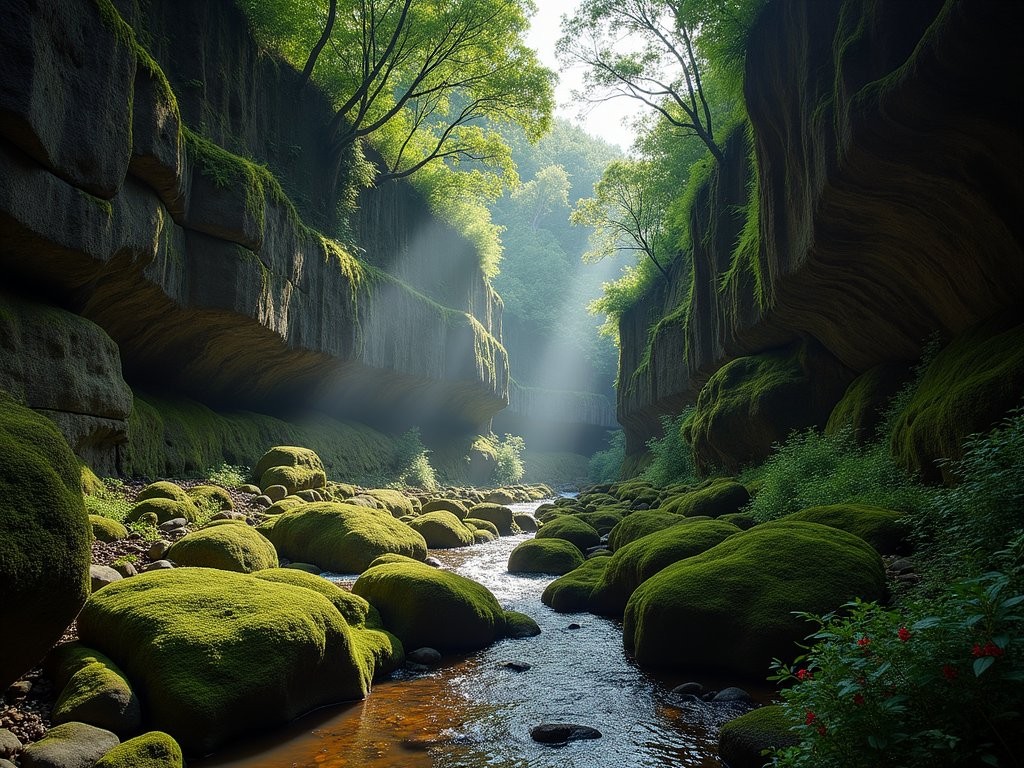
💡 Pro Tips
- Book your permit at least 48 hours in advance through the SANParks website or office
- Start early (around 7 AM) to maximize your chances of spotting wildlife
- Pack at least 2 liters of water per person – there are streams for refilling, but purification tablets are recommended
Obs Bread Co.: The Underground Bakery Experience
In a converted garage tucked behind a nondescript house in Observatory (affectionately known as 'Obs' by locals), Cape Town's most passionate bread alchemist works his magic. No shopfront, no sign, no regular hours – just an Instagram account with cryptic posting times and a loyal following that knows to arrive early or miss out entirely.
I stumbled upon Obs Bread Co. during my second visit to Cape Town, when I was staying at a friend's apartment in this bohemian neighborhood. Each morning, I noticed people walking past with brown paper bags containing what looked like extraordinary loaves of bread. After some gentle interrogation of my neighbor, I was let in on the secret.
'You have to follow Johannes on Instagram,' she explained. 'He posts when the bread is coming out of the oven, and if you're not there within an hour, it's all gone.'
Johannes is a former fine-dining chef who abandoned the restaurant scene to pursue his obsession with naturally fermented sourdough. His garage bakery operates on a delightfully anarchic schedule that depends entirely on when his dough is ready – sometimes 6 AM, sometimes 2 PM.
The first time I visited, I joined a small queue of locals clutching their own bags and containers (single-use packaging is frowned upon here). The garage door was rolled up halfway, revealing a simple setup: a large wood-fired brick oven, a flour-dusted workbench, and Johannes himself, looking like a mad scientist with wild hair and forearms dusted white.
The menu changes daily but might include his signature Cape wild herb focaccia, a dense rye studded with local seeds, or my personal favorite – a sourdough incorporating indigenous fynbos honey and foraged mushrooms. Each creation is a work of art, with a crackling crust that I've attempted to capture in my sketchbook numerous times but never quite managed to do justice.
What makes this experience special is the community that has formed around Johannes's bread. While waiting, strangers exchange recipes, debate the merits of different flours, and share butter recommendations. On my third visit, I found myself deep in conversation with a local ceramicist who invited me to her studio – a connection that would later result in a collaborative exhibition of my paintings on her handcrafted plates.
To find Obs Bread Co., you'll need to follow @obsbreadco on Instagram and be prepared to drop everything when the notification appears. Bring your own bag, cash (no card facilities here), and a willingness to engage with fellow bread enthusiasts. The exact address is never publicly posted – you'll receive it only after responding to the daily bread announcement.
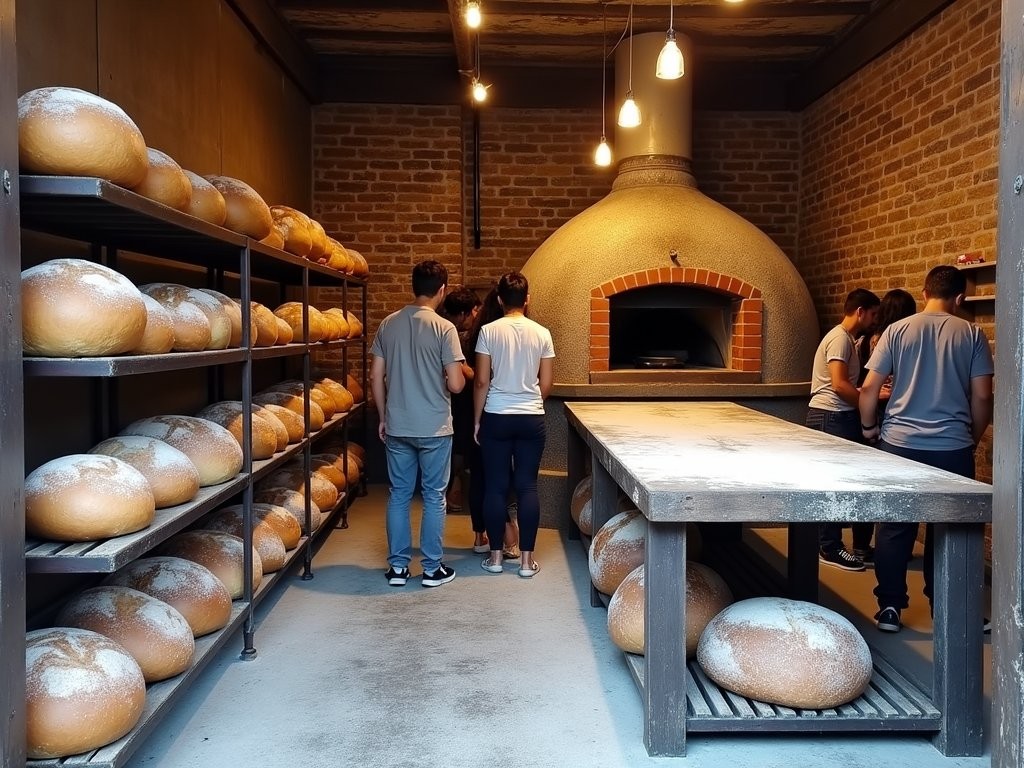
💡 Pro Tips
- Follow @obsbreadco on Instagram and turn on post notifications
- Bring your own bag or container – sustainability is taken seriously here
- Arrive within 30 minutes of the post if you want the full selection
The Secret Cove of Smitswinkel Bay
Just beyond the famous Cape Point Nature Reserve, where most tourist buses turn around after visiting the Cape of Good Hope, lies a hidden paradise that requires both effort and local knowledge to access. Smitswinkel Bay is technically visible from the main road – you might spot a flash of turquoise water far below as you drive along the coastal route – but few travelers know how to reach its pristine shores.
I discovered this secret cove during my first visit to Cape Town, when I was photographing the coastline for a series on meeting points between mountains and sea. A local fisherman pointed to a barely visible path descending the steep cliffs and said, 'That's where you'll find the real Cape.' Intrigued, I followed his directions the next morning.
The unmarked trail begins just after the official Cape Point Reserve entrance (if you're heading back toward Cape Town). Look for a small gravel pullout where you can park safely, then search for a narrow footpath that zigzags down the near-vertical cliff face. This is not a hike for the faint-hearted or the unprepared – the descent takes about 30 minutes and requires proper footwear and a good sense of balance.
Your reward for this effort? A crescent of white sand embraced by crystal-clear waters in shades of azure that would make the Mediterranean jealous. What makes Smitswinkel truly special is its collection of partially submerged shipwrecks, creating one of Cape Town's most magical snorkeling spots. Five vessels were deliberately sunk here between 1969 and 1972 to create an artificial reef, and nature has transformed them into vibrant underwater gardens teeming with marine life.
On my visit, I brought my underwater camera to document this hidden underwater museum. The visibility was extraordinary – easily 15 meters – allowing me to capture the ghostly outlines of the wrecks draped in colorful soft corals, with schools of fish darting between them. One particularly memorable moment was encountering a small pajama shark (endemic to South African waters) resting beneath the hull of the SAS Transvaal wreck.
Above water, the bay is equally captivating. A handful of fishermen's cottages cling to the cliffside, accessible only by boat or the same treacherous path you descended. These homes have no road access, no municipal electricity, and represent a way of life that has all but disappeared from modern Cape Town. The residents collect rainwater, use solar panels, and travel to the city only when absolutely necessary.
What struck me most about Smitswinkel Bay was the quality of light – something I'm always attuned to as an artist. The high cliffs create dramatic shadows that sweep across the bay as the day progresses, while the water reflects the changing sky in a constantly shifting palette of blues and greens. I spent hours simply observing this play of light, making quick watercolor studies in my travel journal.

💡 Pro Tips
- Wear proper hiking shoes for the steep descent
- Pack all food and water you'll need – there are no facilities
- If snorkeling, a wetsuit is advisable as the Atlantic waters are cold year-round
The Woodstock Street Art Night Tour
Cape Town's Woodstock neighborhood has gained international recognition for its vibrant street art scene, with visitors often seen photographing the massive murals that adorn buildings along Albert and Victoria Roads. But what most tourists don't realize is that some of the most powerful and politically charged works are hidden in the back alleys and side streets – and many only reveal their true nature after dark.
On my second visit to Cape Town, I was fortunate to connect with Nathi, a local artist and activist who runs unofficial night tours of Woodstock's lesser-known street art installations. These tours don't appear on any tourism website or booking platform – they operate through word-of-mouth and occasional cryptic announcements at certain art galleries and coffee shops in the area.
'Street art isn't just decoration,' Nathi explained as we met outside The Old Biscuit Mill at sunset. 'In Woodstock, it's a living archive of resistance, gentrification struggles, and community resilience. And some stories can only be told in the shadows.'
What makes these night tours extraordinary is the use of ultraviolet light to reveal hidden dimensions in certain artworks. Nathi handed each person in our small group a UV flashlight, and as darkness fell over Woodstock, we set off into the labyrinth of narrow streets behind the main roads.
The first revelation came in a seemingly abandoned lot between two buildings. What appeared to be a simple portrait of an elderly woman during daylight transformed under our UV beams to reveal ghostly text floating around her – the names of community members displaced by gentrification, invisible except under specific light conditions.
Another remarkable installation utilized thermochromic paint that responds to temperature. Nathi instructed us to place our hands on what looked like a blank section of wall. Slowly, under the heat of our palms, images emerged – scenes of the forced removals that shaped Cape Town's history during apartheid.
Beyond the technical innovations, what moved me most was how these hidden artworks connected to the living community around them. At several stops, residents emerged from their homes to add context to the pieces, sharing personal stories that the art represented. One elderly gentleman showed us fading photographs of Woodstock before the 'urban renewal' projects began, creating a powerful dialogue between past and present.
The tour concluded at a nondescript garage that transforms into an underground gallery on certain evenings. Inside, local artists who contribute to Woodstock's walls displayed their more intimate works – pieces too controversial or personal for public spaces. Over homemade ginger beer and koeksisters (a traditional South African syrup-soaked pastry), we discussed the role of art in preserving community memory and challenging dominant narratives.
To experience this hidden side of Woodstock's art scene, you won't find a website to book through. Instead, visit the following spots and discreetly ask about 'Nathi's night walk': Truth Coffee on Buitenkant Street, The Electric at 48 Canterbury Street, or Rosetta Roastery inside The Old Biscuit Mill. Tours typically run on Wednesday and Saturday evenings, starting after sunset, and operate on a pay-what-you-can basis.
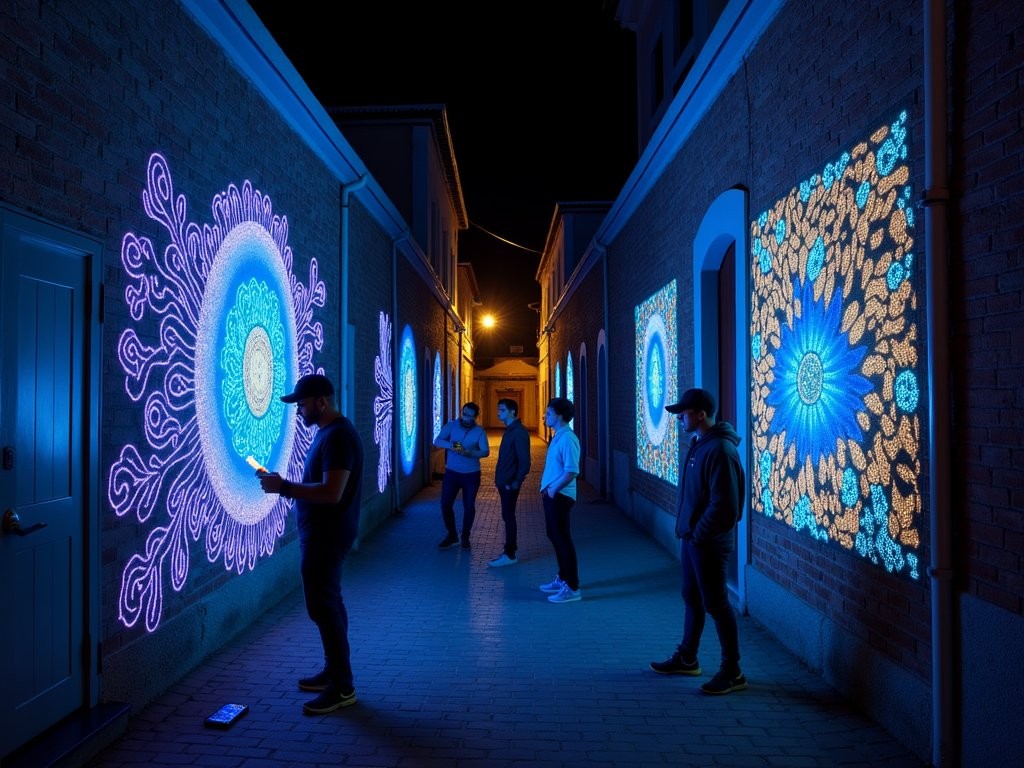
💡 Pro Tips
- Visit Truth Coffee or The Electric to inquire about tour dates
- Bring cash for the pay-what-you-can contribution (R150-300 is appropriate)
- Wear comfortable shoes and bring a light jacket – evenings can be cool even in spring
The Forgotten Tunnel Beach
Between the popular beaches of Clifton and Camps Bay lies a small, hidden cove that doesn't appear on tourist maps. Known to locals simply as 'Tunnel Beach,' this secluded stretch of sand is accessible only by passing through a narrow sea cave that cuts through a rocky headland – and only at low tide.
I learned about this hidden gem from a fellow artist I met at a gallery opening in the city center. 'If you want to see where Cape Town's creative souls go to think,' she told me, 'you need to find the tunnel when the sea allows.'
The adventure begins at the far right end of Clifton Fourth Beach. While most beachgoers settle on the main stretch, continue walking past the large boulders that appear to mark the end of the beach. At first, it seems like you're heading nowhere, but keep the faith and scramble over a few rocks until you spot a dark opening in the headland ahead.
Timing is everything here – this expedition is only possible during low tide, when the sea retreats enough to expose the tunnel entrance. I checked the local tide tables (easily found online or at any surf shop) and arrived about an hour after low tide had begun.
The tunnel itself is about 15 meters long, carved by centuries of ocean persistence. As I ducked into its cool darkness, the sound of the waves echoed against the stone walls, creating a natural symphony. My headlamp proved essential here, illuminating the uneven ground and tidal pools within the passage.
Emerging on the other side feels like stepping into a secret world. A perfect crescent of sand, perhaps 100 meters long, curves between dramatic rock formations. Unlike the often-crowded beaches nearby, I found only a handful of people here – a couple reading books, a local artist painting the seascape, and two older men engaged in deep conversation while fishing from the rocks.
What makes this hidden beach particularly special is its unique lighting. The surrounding cliffs create a natural frame that captures the afternoon sun perfectly, bathing the cove in golden light between 3 and 5 PM (during spring and summer months). The water here is also noticeably calmer than at neighboring beaches, protected from the stronger currents by the natural rock formation.
I spent a blissful afternoon sketching the interplay of light and shadow on the rock faces, occasionally cooling off in the sheltered tidal pools that form among the boulders. At one point, a local woman who visits daily pointed out a family of rock hyraxes (locally called dassies) that have made their home in the crevices above the beach – these adorable creatures resemble large guinea pigs but are, surprisingly, the closest living relatives to elephants.
As the tide began to rise again, the locals packed up their belongings with practiced efficiency. 'You don't want to get caught on the wrong side,' warned one man as he folded his beach chair. 'The tunnel floods completely at high tide, and the only way back is a very long swim around the point – or waiting several hours for the next low tide.'
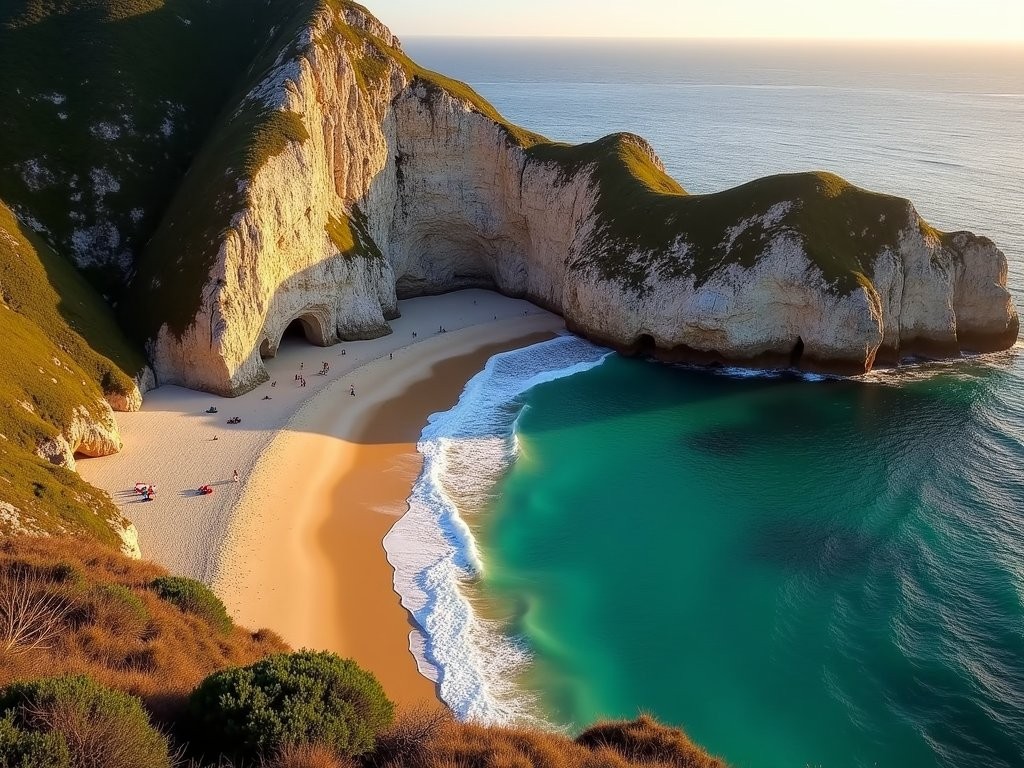
💡 Pro Tips
- Check tide tables carefully – aim to arrive 1-2 hours after low tide begins
- Bring a headlamp or flashlight for navigating the tunnel safely
- Don't linger too long – allow at least 30 minutes to return before the tide rises too high
The Bo-Kaap Home Kitchen Experience
The colorful houses of Bo-Kaap feature prominently in Cape Town's tourism brochures, and visitors frequently photograph these vibrant facades. But while the exterior aesthetic draws crowds, the real cultural treasure of this historically Cape Malay neighborhood remains largely hidden behind closed doors – the extraordinary culinary traditions preserved in family kitchens for generations.
During my first week staying in Bo-Kaap, I was sketching the distinctive architecture when an elderly woman named Farieda approached me. After chatting about my artwork, she mentioned that I was capturing 'only the shell, not the heart' of Bo-Kaap. When I expressed interest in learning more, she invited me to join her family's weekly cooking gathering – an invitation that would transform my understanding of Cape Town's cultural landscape.
Unlike the commercial cooking classes advertised downtown, these authentic home kitchen experiences operate through personal connections and community networks. Farieda's extended family gathers every Thursday evening to prepare traditional Cape Malay dishes, with each session focused on preserving specific recipes and techniques for the younger generation.
The evening I attended was dedicated to perfecting bobotie – a complex dish of spiced minced meat with an egg-based topping that reflects the multicultural influences that shaped Cape Malay cuisine. As we worked in the modest kitchen, three generations of family members shared not just cooking techniques but the stories behind each ingredient and method.
'This cinnamon comes from the trees my grandfather planted when our family was forcibly moved here during apartheid,' explained Farieda as she measured spices by eye rather than with tools. 'The recipe changes with each telling, but the story remains.'
What makes these kitchen gatherings extraordinary is their authenticity – these are not performances for tourists but genuine family traditions that visitors are occasionally welcomed into. Throughout the evening, neighbors dropped by, contributing ingredients or simply joining the conversation that flowed between English, Afrikaans, and fragments of Malay.
After three hours of preparation, we sat down to share the meal on the rooftop terrace overlooking the city lights and distant Table Mountain. The food was transcendent – complex layers of flavor that no restaurant version could match – but even more valuable was the context: understanding how these culinary traditions served as vessels for cultural preservation during decades of oppression.
Before leaving, I asked Farieda how interested travelers might experience something similar. She explained that several families in Bo-Kaap occasionally welcome respectful visitors to their cooking gatherings, but these opportunities aren't advertised online. Instead, she recommended visiting Atlas Trading Company (the historic spice shop on Wale Street) and speaking with the owners, who sometimes connect travelers with families open to sharing their kitchen traditions.
'Come with a gift – perhaps good coffee or fresh fruit,' advised Farieda. 'But more importantly, come with time and genuine interest. These aren't quick tourist experiences; they're relationships.'
For those seeking an even deeper connection to Bo-Kaap's culinary heritage, I discovered that the local Nurul Islam Mosque occasionally hosts community iftars (breaking of fast) during Ramadan that welcome respectful visitors of all backgrounds. These gatherings offer profound insights into how food, faith, and community intertwine in this historic neighborhood.
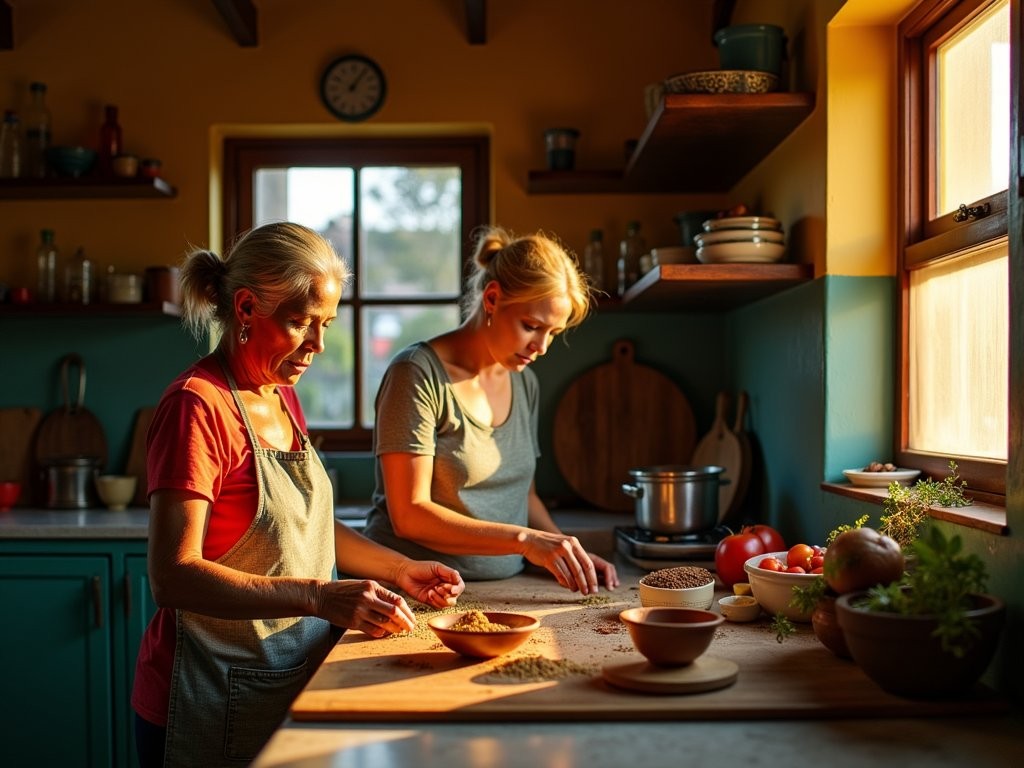
💡 Pro Tips
- Visit Atlas Trading Company on Wale Street to inquire about home kitchen experiences
- Bring a thoughtful gift if invited to a family home
- Allow at least 3-4 hours for the full experience – cooking is unhurried here
The Forgotten Shipwreck Coast of Cape Point
Beyond the tourist viewpoints of Cape Point lies a rugged, windswept coastline that few visitors ever explore – a dramatic landscape where the cold Atlantic crashes against jagged cliffs, creating a graveyard for ships that spans centuries. While the lighthouse and official paths draw crowds, a hidden trail leads to what locals call the 'Shipwreck Coast,' where the skeletal remains of vessels tell stories of maritime disasters.
I discovered this hidden route during a chance conversation with a park ranger who noticed my interest in historical landscapes. 'If you want to see where the ocean keeps its secrets,' he said, 'follow the path of the ghosts.'
The trail begins inconspicuously at the main Cape Point parking lot. Instead of heading toward the lighthouse with the crowds, look for a narrow path leading west, marked only by a weathered sign reading 'Restricted Area – Proceed with Caution.' This is not an officially maintained route, which keeps most tourists away, but it remains legally accessible to those willing to accept the challenging terrain.
The path quickly descends through dense fynbos vegetation, with the distinctive scent of wild rosemary and buchu accompanying each step. After about 30 minutes of hiking, the trail emerges onto a dramatic coastline where sheer cliffs drop to isolated rocky beaches. Here, scattered along a 3-kilometer stretch, lie the remains of at least seven shipwrecks, some dating back to the 18th century.
The most impressive is the SS Thomas T. Tucker, an American liberty ship that ran aground in 1942 while evading German U-boats. Large sections of its hull still protrude from the sand and shallow water, creating a hauntingly beautiful scene that I spent hours photographing and sketching. The rust-colored metal against the turquoise water creates a striking contrast that captures the eternal struggle between human engineering and natural forces.
Further along the coast, more recent wrecks tell equally compelling stories. The remains of the Nolloth, a South African fishing vessel lost in a 1965 storm, are scattered across a small cove, now serving as perches for cormorants and gulls. Nearby, barely visible at low tide, lie the engine blocks of the Phyllisia, a yacht that met its end during a 1985 race around the peninsula.
What makes this coastal hike particularly special is the solitude it offers – a rare commodity at popular Cape Point. During my six-hour exploration, I encountered only two other hikers, both locals who were photographing the nesting sites of rare seabirds that thrive in this undisturbed environment.
The biological diversity here is as impressive as the maritime history. The ranger had advised me to bring my compact binoculars, which proved invaluable for spotting African black oystercatchers, endangered bank cormorants, and even a pair of peregrine falcons nesting on the inaccessible cliff faces.
This hike requires proper preparation. The terrain is challenging, with loose rocks and sections where you'll need to scramble over boulders. There's no shade or water sources along the route, and the weather can change rapidly – I experienced bright sunshine, thick sea fog, and a brief, intense rain shower all within the same afternoon.
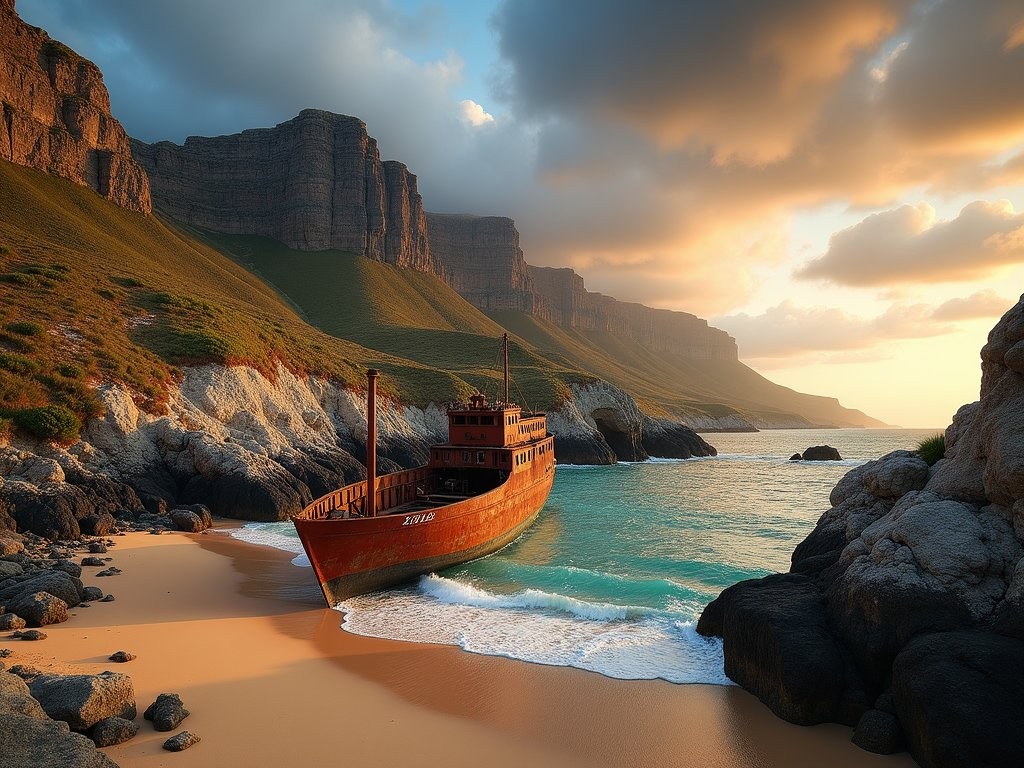
💡 Pro Tips
- Register your hike with the Cape Point entrance gate for safety
- Wear sturdy hiking boots with ankle support – the terrain is treacherous
- Check tide tables and avoid the route during spring high tides when some sections become impassable
Final Thoughts
As the African sun sets behind Table Mountain, painting the city in hues that would challenge any artist's palette, I find myself reflecting on these hidden corners of Cape Town. Beyond the postcard vistas and tourist checkpoints lies a city of whispered secrets and unexpected encounters – places where the authentic spirit of the Mother City reveals itself to those willing to listen closely. These seven spots represent just a fraction of Cape Town's hidden treasures, each one a window into different aspects of this multifaceted city: its natural wonders, culinary heritage, artistic soul, maritime history, and resilient communities. What makes these places special isn't just their beauty or uniqueness, but the stories they contain and the connections they foster. So when you visit Cape Town, by all means, ascend Table Mountain and photograph the penguins at Boulders Beach – but also leave space in your itinerary for discovery. Speak with locals, follow unmarked paths, and allow yourself to be guided by curiosity rather than just guidebooks. The Cape Town that will remain in your heart long after you've departed isn't found on postcards but in these hidden moments of authentic connection.
✨ Key Takeaways
- The most meaningful Cape Town experiences often happen away from tourist hotspots
- Connecting with locals is the key to discovering the city's hidden gems
- Timing (tides, seasons, light) plays a crucial role in accessing many secret spots
- Cape Town's diverse cultural heritage is often best experienced through food and art
📋 Practical Information
Best Time to Visit
September to November (spring)
Budget Estimate
R700-1200 per day excluding accommodation
Recommended Duration
7-10 days
Difficulty Level
Intermediate

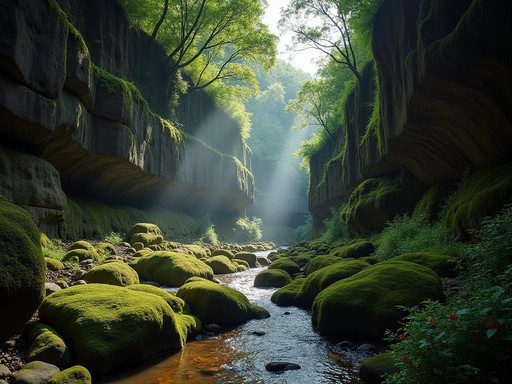
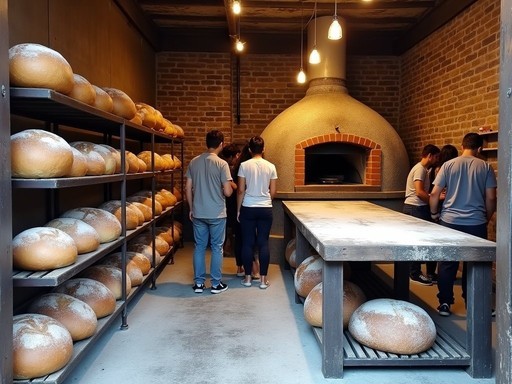
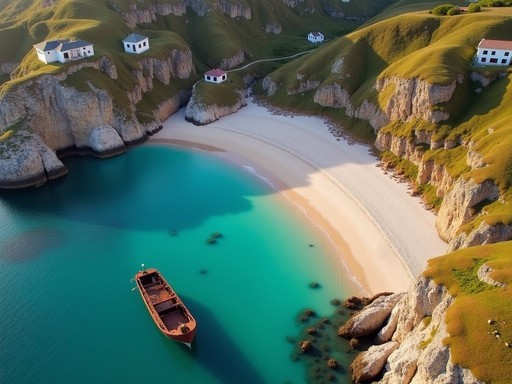
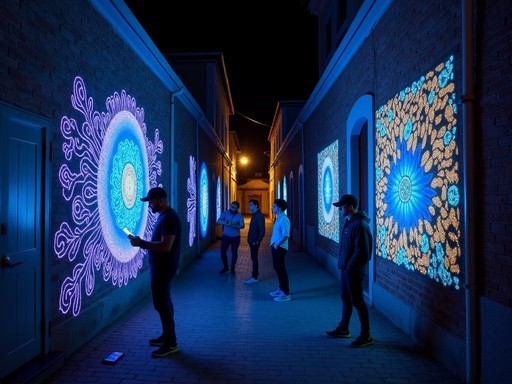

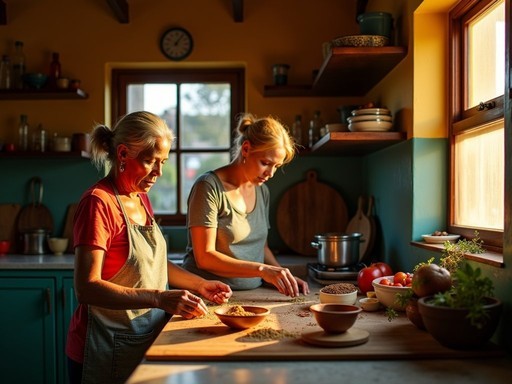


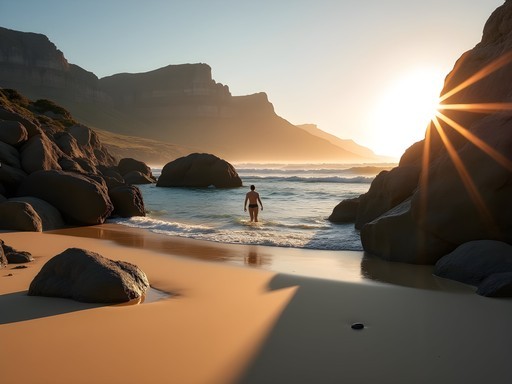
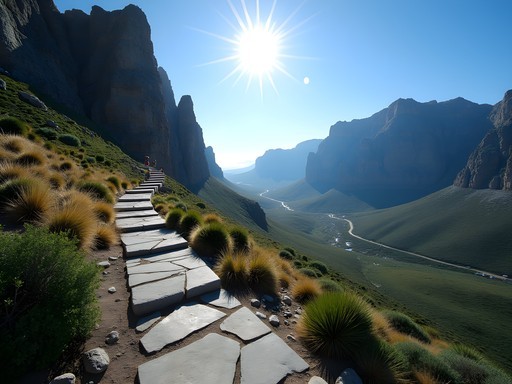





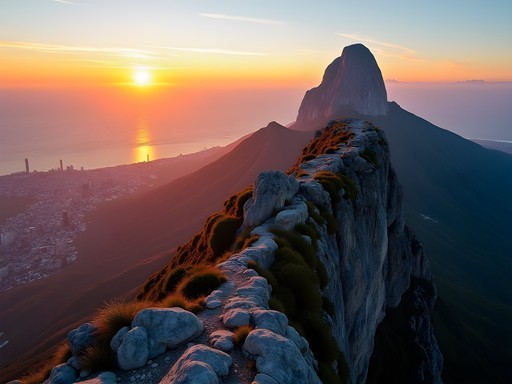
Comments
Casey Andersson
Amit, your Bo-Kaap morning sketches remind me so much of my time there! For anyone heading to Cape Town, I'd add one more secret spot: the Saturday morning Oranjezicht City Farm Market at Granger Bay. Not completely unknown, but definitely where locals go for incredible farm-to-table food with a view of the ocean. The mushroom forager there has varieties I've never seen anywhere else in my travels! Perfect place to stock up before heading to any of these hidden spots for a picnic.
greenlegend
Just looked this market up - definitely adding it to my itinerary! Thanks Casey!
starbackpacker
Just did the Woodstock Street Art Night Tour last week based on this post and WOW! Completely different vibe at night with all the lights. Our guide Themba knew every artist and the stories behind the murals. Pro tip: there's a little hole-in-the-wall coffee shop called Espresso Lab near the end of the tour route - best flat white in Cape Town! Also, the locals recommended using the MyCiti bus to get around - super cheap and efficient for hitting these spots.
wildnomad
Was it easy to book the night tour or did you have to arrange it in advance?
starbackpacker
Had to book 2 days ahead - they only run it twice a week. The guide's Instagram is @woodstock_arts_cpt if you want to DM them directly!
greenlegend
Saving this for my trip next month! The Woodstock art tour sounds amazing.
beachphotographer
Those Smitswinkel Bay photos are stunning! How difficult is it to get there without a car? Planning a trip in January.
Casey Andersson
I was there in March! You can take an Uber, but it gets pricey. Better option is to join one of the Cape Point tours and ask to be dropped off - just arrange pickup time in advance. The hike down is steep but absolutely worth it. I captured the most incredible sunrise there with my travel tripod - essential for those low light morning shots over the bay.
beachphotographer
Thanks for the tip! I'll look into those tours. My camera gear isn't that fancy but I'm excited to try capturing that view!
wildnomad
Just got back from Cape Town last week and wish I'd seen this post before going! Did manage to find the Disa Gorge Trail though - absolutely magical and way less crowded than the main Table Mountain routes. The fynbos there is incredible! Did anyone try that underground bakery? Sounds like my kind of hidden gem.
greenlegend
The Obs Bread Co is amazing! Their sourdough is worth the hunt to find it. Cash only though, heads up!
wildnomad
Noted for next time! Thanks!
oceanblogger
As a Capetonian, I'm torn between thanking you for the beautiful writing and being annoyed you're sharing our secret spots! 😂 But seriously, great post. I'd add Beta Beach in Bakoven to this list - tiny hidden beach between boulders with perfect sunset views and almost never crowded.
Amit Sanchez
Haha, I know that feeling! I debated whether to share these spots, but they're too beautiful not to. Thanks for the Beta Beach tip - will check it out next time!
Sage Dixon
Just got back from Cape Town and used your guide as inspiration to find the road less traveled! The Woodstock Street Art Night Tour was a highlight - our guide Themba was incredible and showed us street art that changes weekly. We ended up at a tiny jazz club that wasn't even on the official tour! One tip I'd add: bring a good headlamp for the Disa Gorge Trail if you want to start early (which I recommend). My Black Diamond Spot 350 was perfect when we started at dawn to catch the morning light on the gorge walls. Amit, your writing captures the soul of Cape Town in a way guidebooks never could.
nomadchamp
That sunset photo from Smitswinkel Bay is incredible! What camera do you use?
luckyfan5812
Great post! Saved for my trip next month.
triplegend
OMG I can't believe you mentioned Obs Bread Co.!! I stumbled across it last year when staying in Observatory and literally went every morning for their sourdough! The owner (Pieter I think?) gave me baking tips too! Such a local treasure that I was planning to keep secret 😂 Their cardamom buns are LIFE-CHANGING people!!!
luckyfan5812
Where exactly is this place? Can't find it on Google Maps!
triplegend
It's deliberately low-key! Look for the blue door on Lower Main Rd near the corner with Trill Rd. No sign, just follow the smell of fresh bread around 7am!
Venture X
Premium card with 2X miles, $300 travel credit, Priority Pass